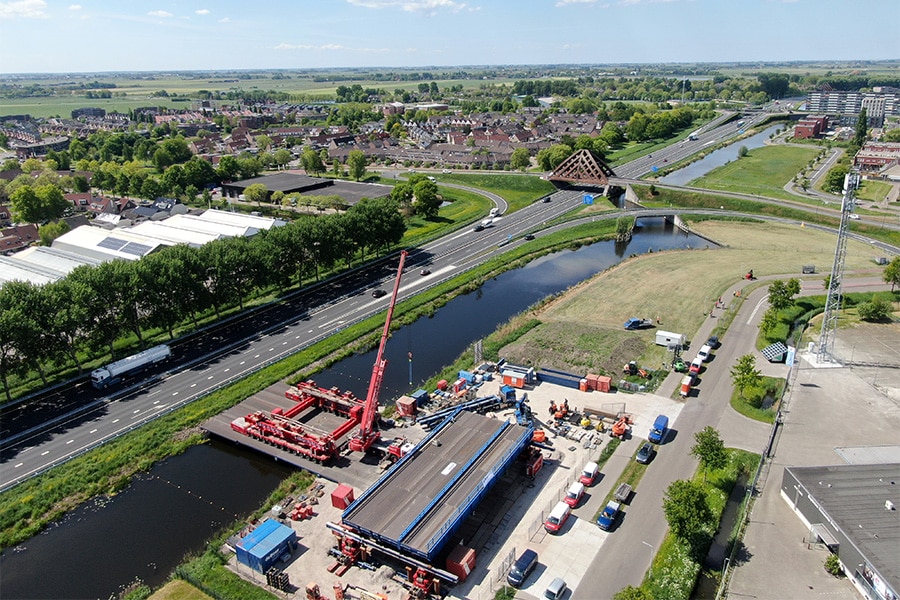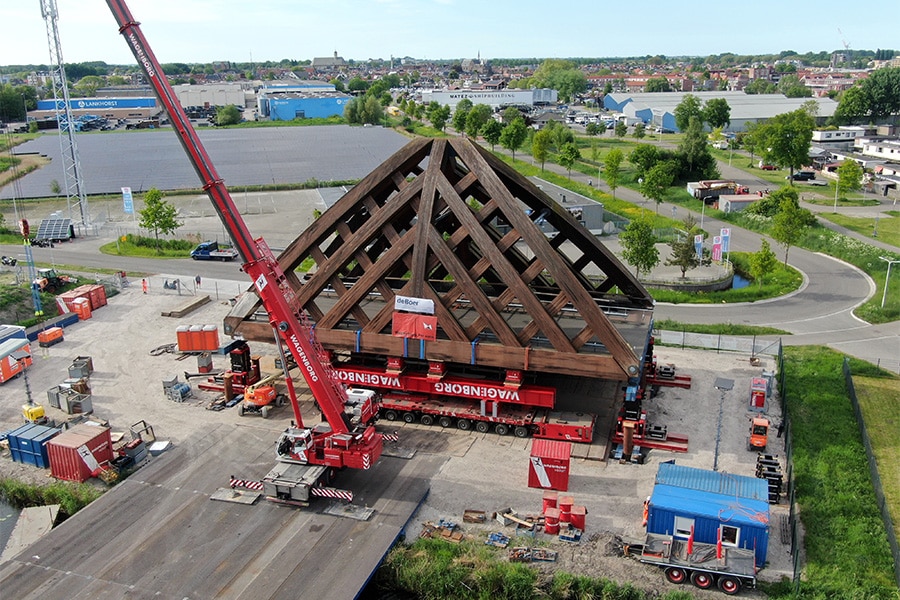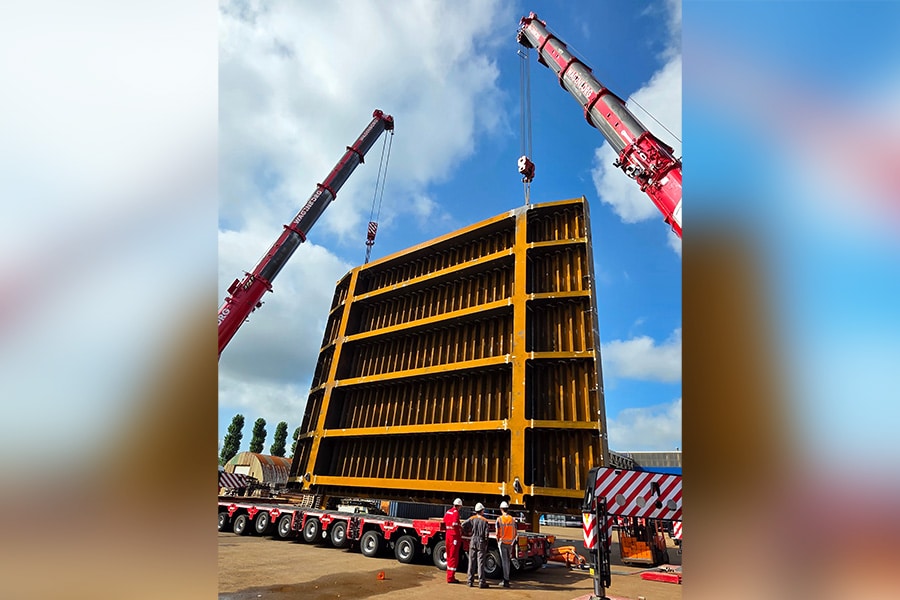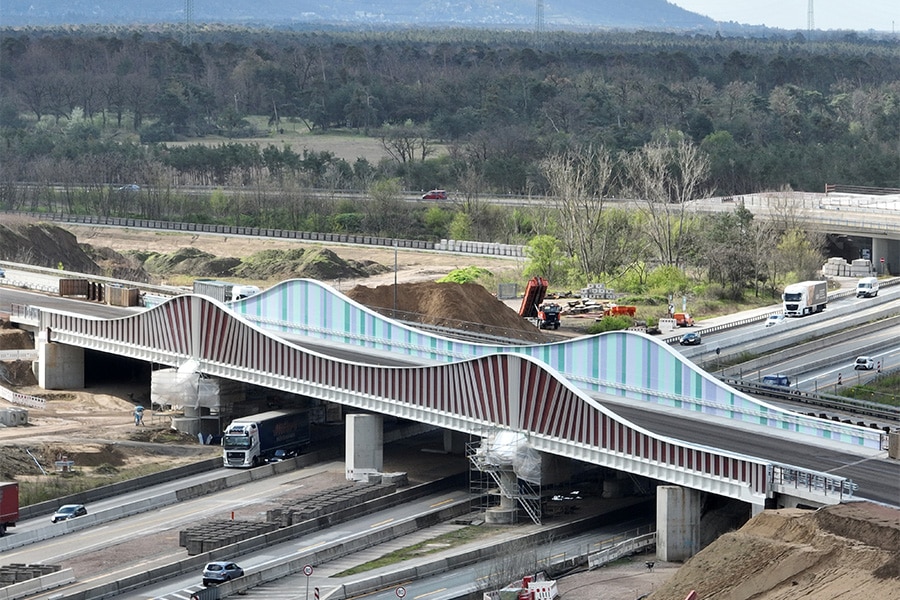
Special bridge switch makes Krúsrak bridge renovation unique
Rijkswaterstaat is renovating the wooden Krúsrak bridge over the N7 near Sneek this fall. Especially for this, the bridge has been moved in its entirety to a nearby work site. A temporary steel bridge has taken its place. Civiele technieken deBoer (CT deBoer) of Nieuwegein, commissioned by Rijkswaterstaat, is partly responsible for the temporary work site and the "bridge switch. "It is and was puzzling on a postage stamp," said Roy Grieving, project manager at CT deBoer.
The Krúsrak bridge is a special bridge and made entirely of durable Accoya wood. However, research showed that the Accoya wood is cracking. The protective coating is also coming off. Time for a thorough renovation. Last May the first highlight of the 'N7 maintenance bridge Krúsrak' project took place, namely the bridge change. After months of preparation, two bridges were moved in one weekend. The Krúsrak bridge was moved to the work site on Selfhelpweg, where the renovation is taking place. A temporary steel bridge, suitable for cars, cyclists and pedestrians, has been placed at the site of Krúsrak bridge. "We used this temporary modular bridge previously on the A16," Grieving says. "We modified the design so that it fits into the existing structure and meets the requirements of the Department of Public Works."

Spanning over water
CT deBoer also set up the temporary work site. This went beyond fences, entrances and exits for transportation and steel driving plates. Thus, temporary foundations also had to be prepared. Because of the clay soil, the piles were driven into the ground more than 20 meters deep. "The work site itself is 70 by 35 meters. This seems large, but after we built the temporary bridge here, it was puzzling on a postage stamp. Moreover, between the N7 and the work site is a canal. To transport the bridges across the water, we also prepared a temporary overpass with a span of 25 meters."
Craftsmanship
For transportation, CT deBoer worked with Wagenborg Nedlift. They also installed the original bridge in 2008. "We work together more often and form a nice combination. We also regularly exchange equipment with each other. Because we know each other well, the bridge swap went smoothly." For the relocation of the Krúsrak bridge, first the bridge was jacked up. Then Wagenborg Nedlift was able to drive the bridge from its place and bring it to the work site on SPMTs (Self-propelled modular transporter). "The temporary steel bridge completed the route in reverse. When placing the temporary steel bridge, we only had 4 inches of clearance. That definitely requires the necessary craftsmanship. In order for this bridge to connect properly to the existing structure, there was a height difference of 28 centimeters, the two ramps were adjusted in height and connected to the temporary bridge with asphalt."
If the renovation goes according to schedule, the Krúsrak bridge will be put back in place in early 2026 and will be able to last for decades again.




